Related Research Articles

The Australian Labor Party (ALP), also simply known as Labor, is the major centre-left political party in Australia, one of two major parties in Australian politics, along with the centre-right Liberal Party of Australia. It has been in Opposition in the federal parliament since the 2013 election. The ALP is a federal party, with political branches in each state and territory. They are currently in government in Victoria, Queensland, Western Australia, the Australian Capital Territory, and the Northern Territory. The Labor Party is the oldest political party in Australia.
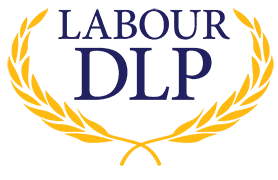
The Democratic Labour Party (DLP), formerly the Democratic Labor Party, is an Australian political party. It broke off from the Australian Labor Party (ALP) as a result of the 1955 ALP split, originally under the name Australian Labor Party (Anti-Communist), and was renamed the Democratic Labor Party in 1957. In 1962, the Queensland Labor Party, a breakaway party of the Queensland branch of the Australian Labor Party, became the Queensland branch of the DLP.
The Liberal Party was a parliamentary party in Australian federal politics between 1909 and 1917. The party was founded under Alfred Deakin's leadership as a merger of the Protectionist Party and Anti-Socialist Party, an event known as the Fusion.
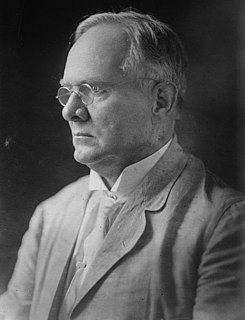
Sidney Johnston Catts was an American politician and anti-Catholic activist who served as the governor of Florida as a member of the Prohibition Party. After leaving office he became involved in criminal procedures due to his activities as governor and for business activities after leaving office. He was later acquitted, although he went bankrupt in the process.

The Liberal–National Coalition, commonly known simply as "the Coalition", is an alliance of centre-right political parties that forms one of the two major groupings in Australian federal politics. The two partners in the Coalition are the Liberal Party of Australia and the National Party of Australia. Its main opponent is the Australian Labor Party (ALP); the two forces are often regarded as operating in a two-party system. The Coalition has been in government since the 2013 federal election, most recently being re-elected in the 2019 Australian federal election. The group is led by Scott Morrison as Prime Minister of Australia since August 2018.

The Division of Barton is an Australian electoral division in the state of New South Wales.

Lang Labor was a faction of the Australian Labor Party (ALP) consisting of the supporters of Jack Lang, who served two terms as Premier of New South Wales and was the party's state leader from 1923 to 1939.

Sir Richard Layton Butler KCMG was the 31st Premier of South Australia, serving two disjunct terms in office: from 1927 to 1930, and again from 1933 to 1938.
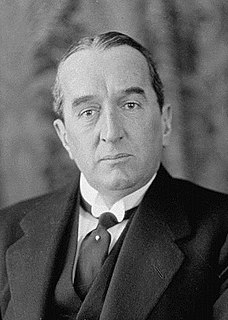
The 1925 Australian federal election was held in Australia on 14 November 1925. All 75 seats in the House of Representatives and 22 of the 36 seats in the Senate were up for election. The incumbent Nationalist–Country coalition, led by Prime Minister Stanley Bruce, defeated the opposition Labor Party led by Matthew Charlton in a landslide. This was the first time any party had won a fourth consecutive federal election.

The 1922 Australian federal election was held in Australia on 16 December 1922. All 75 seats in the House of Representatives, and 19 of the 36 seats in the Senate were up for election. The incumbent Nationalist Party, led by Prime Minister Billy Hughes lost its majority. However, the opposition Labor Party led by Matthew Charlton did not take office as the Nationalists sought a coalition with the fledgling Country Party led by Earle Page. The Country Party made Hughes's resignation the price for joining, and Hughes was replaced as Nationalist leader by Stanley Bruce.

The 1919 Australian federal election was held on 13 December 1919 to elect members to the Parliament of Australia. All 75 seats in the House of Representatives and 19 of the 36 seats in the Senate were up for election. The incumbent Nationalist Party government won re-election, with Prime Minister Billy Hughes continuing in office.

The 1917 Australian federal election was held in Australia on 5 May 1917. All 75 seats in the House of Representatives and 18 of the 36 seats in the Senate were up for election. The incumbent Nationalist Party, led by Prime Minister Billy Hughes, defeated the opposition Labor Party led by Frank Tudor in a landslide.

Andrew William Lacey was the 22nd Leader of the Opposition in the Parliament of South Australia from 1933 to 1938, representing the South Australian Branch of the Australian Labor Party. Lacey was previously the Labor member for the seat of Grey in the Australian House of Representatives from 1922 to 1931.
This is a list of the members of the Australian House of Representatives in the Eighth Australian Parliament, which was elected at the 1919 election on 13 December 1919.

James Howard Catts was an Australian politician, unionist and businessman.
This article provides information on candidates who stood for the 1922 Australian federal election. The election was held on 16 December 1922.
The Industrial Socialist Labor Party, Industrial Labor Party and the Independent Labor Party were short lived socialist political parties in Australia in 1919 and the early 1920s. The Industrial Socialist Labor Party was founded by radical socialist members of the industrial wing of the Australian Labor Party (ALP), at a time when the ALP's socialist ideology was a matter of intra-party dispute. It was closely aligned with the Industrial Workers of the World (IWW) and the One Big Union (OBE) movement.
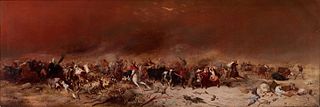
The history of the Australian Labor Party has its origins in the Labour parties founded in the 1890s in the Australian colonies prior to federation. Labor tradition ascribes the founding of Queensland Labour to a meeting of striking pastoral workers under a ghost gum tree in Barcaldine, Queensland in 1891. The Balmain, New South Wales branch of the party claims to be the oldest in Australia. Labour as a parliamentary party dates from 1891 in New South Wales and South Australia, 1893 in Queensland, and later in the other colonies.
The Australian Labor Party , commonly known as Victorian Labor, is the semi-autonomous Victorian branch of the Australian Labor Party (ALP). The Victorian branch comprises two major wings: the parliamentary wing and the organisational wing. The parliamentary wing comprising all elected party members in the Legislative Assembly and Legislative Council, which when they meet collectively constitute the party caucus. The parliamentary leader is elected from and by the caucus, and party factions have a strong influence in the election of the leader. The leader's position is dependent on the continuing support of the caucus and the leader may be deposed by failing to win a vote of confidence of parliamentary members. By convention, the premier sits in the Legislative Assembly, and is the leader of the party controlling a majority in that house. The party leader also typically is a member of the Assembly, though this is not a strict party constitutional requirement.
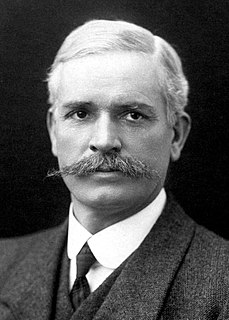
The Australian Labor Party held a leadership spill on 8 July 1913, following the party's defeat at the May 1913 federal election. Andrew Fisher was re-elected to the leadership, defeating William Higgs. It was the first occasion on which a sitting leader had faced a challenge.